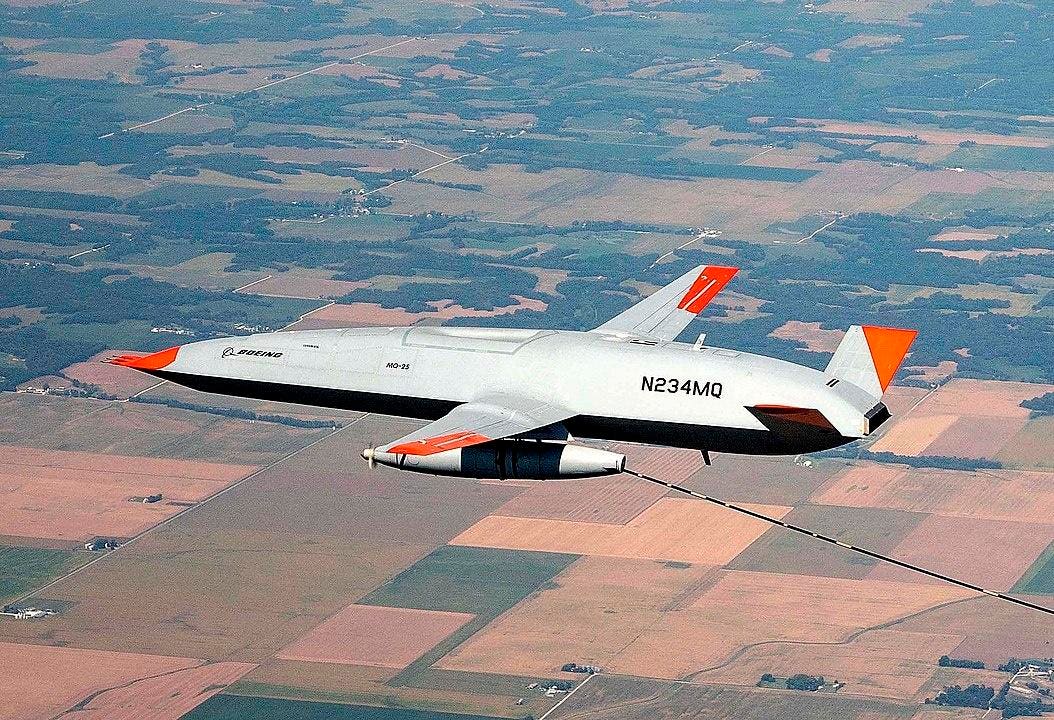Fortune 500 federal contractor Leidos
LDOS
MSFT
Microsoft has recently made major advances in applying AI to tasks such as internet search and natural language interpretation. Some observers say the world’s biggest software company is in a race with Google to dominate the AI space, but the reality is that dozens of companies are chasing various facets of the emerging market.
For Leidos, a $15 billion tech firm that generates most of its revenues from defense, AI is yet another way to demonstrate it is not a traditional military contractor. The company’s business with the federal government is concentrated in digital modernization, cyber operations, mission software and other areas that rely more on technical expertise than heavy capital expenditures.
Leidos has recently shifted 20 critical support applications from its work on the Navy’s Next Generation Enterprise Network—the world’s biggest intranet—to Microsoft’s Azure cloud environment, so the July announcement reflects what looks to be a growing relationship between the two companies.
However, Leidos is not alone in embracing artificial intelligence for public-sector applications. Several major defense contractors are spending heavily on AI for military uses, pursuant to a Pentagon strategy that identified potential in areas such as improved situational awareness, better tactical decision-making, predictive maintenance, force protection, and reduction of collateral damage in combat operations.
As Northrop Grumman
NOC
For instance, the highly predictable circumstances in which an autonomous vehicle must operate on the streets of a major US city lend themselves to the rule-based algorithms that underpin AI software. In wartime, though, there are few reliable rules and AI must be able to cope with all sorts of unusual developments.
Applying AI to combat environments thus entails unique challenges. Although the basic purpose of artificial intelligence is to mimic the reasoning of humans, it is understood that the software must act faster and with greater precision than a human actor could. That’s the benefit of substituting it for human judgment in some situations.
But replacing humans with software in a warfighting environment raises a host of ethical concerns, so software engineers must not only fashion source code that can cope with a dynamic environment, but also build in rules that limit the latitude of machines to assume too broad a role in life-and-death decisions.
That’s a trough assignment, and companies like Lockheed Martin
LMT
Last year, Lockheed stood up an internal AI “factory” designed to streamline access of its software writers to the resources they need for generating AI applications. The company is hiring AI specialists at a furious pace, typically compensating them with six-digit salaries and generous benefits.
This effort proceeds under the umbrella of a broader company initiative that CEO James Taiclet calls “21st Century Security,” which focuses on the use of new information technologies to generate enduring advantages for US warfighters.
Some of Lockheed Martin’s AI work unfolds in traditional business areas, such as enhancing the performance of the sea-based Aegis fire-control system. But other work illustrates the fungibility of AI expertise across markets, for instance the company’s use of AI to help firefighters predict and control the spread of wildfires.
It’s all about exploiting data from diverse sources to detect and act on patterns that might have taken humans much longer to discern. The Pentagon’s AI strategy is probably correct in assessing that “AI is poised to transform every industry.”
That raises intriguing questions about where the emerging field might take companies like Lockheed Martin in the future. Maybe into new industries. Maybe to Mars.
Lockheed Martin contributes to my think tank.
RTX, which both competes with and teams with Lockheed, sees the potential. The company (which also contributes to my think tank) is ranked by Harrity LLC as one of the top ten recipients of US utility patents, with 2,684 patents awarded in 2022. AI is potentially applicable to every market in which RTX operates, from engine maintenance at Pratt & Whitney to sensor processing at Raytheon to flight operations at Collins Aerospace.
RTX formed an alliance three years ago with C3ai, a company that had received a major contract from the Defense Innovation Unit to develop predictive maintenance software for Air Force aircraft. The Pentagon office, which concentrates on identifying commercial technologies with military potential, figures that predictive maintenance could save the military $15 billion annually if applied across the entire joint feet.
Those are big savings, equal in scale to all the revenues at Leidos, and Leidos is nobody’s idea of a small company (it has 44,000 employees).
Some analysts have recently begun speculating that heavy investment in AI startups has created a financial bubble that might soon burst. Other observers worry that the technology might one day become too powerful.
But that is the way all technology breakthroughs unfold. If the technology is really profound and far-reaching, it will go through repeated boom-and-bust cycles before it finds a stable place among the panoply of human innovations.
As far as the defense industry is concerned, though, artificial intelligence is the future. The industry has made its bets and will stick with AI, if for no other reason out of fear it will miss a major opportunity.
AI may not solve every challenge America’s military faces, but it will likely play a role in how each challenge is assessed and addressed.
As noted above, Leidos, Lockheed Martin and RTX contribute to my think tank.
Read the full article here





